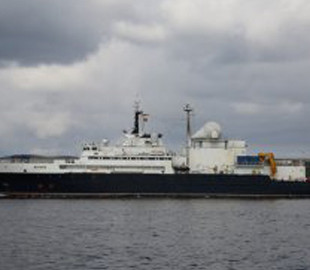
Ships of the Irish Navy were forced to escort the Russian spy ship out of the Irish Sea, where strategically important underwater communications cables are located.
What is known about the escorting of the Russian spy ship out of the Irish Sea
It is noted that the Russian spy ship “Yantar” was discovered on Thursday, November 14, east of Dublin and west of the British coast in the Irish Sea.
At some point, the Russian ship was in the territory of the exclusive economic zone of Ireland, just 5-7 km from the cables that connect Ireland and Great Britain.
At the same time, the Irish military recorded how the crew of the Russian vessel used at least three drones for surveillance.
The Russian ship at that time turned off the transponder that reports its location.
The Irish military tried to establish contact with the Russian vessel, but there was no response.
The behavior of the crew of the Russian vessel caused concern among the Irish and British military.
200% Deposit Bonus up to €3,000 180% First Deposit Bonus up to $20,000The vessel “Yantar” is classified as a research vessel with underwater rescue capabilities.
Formally, this is a civilian vessel, but it is part of the Russian Navy and works on the tasks of the Ministry of Defense of the aggressor country.
Why the Russian vessel caused concern for the military of Ireland, Britain and analysts
Navy Lookout intelligence analysts note that “Amber” can use devices for underwater diving. It is not the first time it has been seen near strategically important underwater communications facilities.
Analysts suggest that this time the ship's mission “was more about strategic signaling and intelligence gathering” than sabotage.
In the end, the Russians withdrew from the parking place and moved away, and the ship of the Irish Navy LÉ James Joyce accompanied them. Military aircraft also monitored the process.
The presence of the Russian spy ship has raised new concerns about the security of the communications cables that run between Ireland and Great Britain and carry global internet traffic from huge data centers run by technology companies, including Google and Microsoft, whose European headquarters are located in Ireland.

